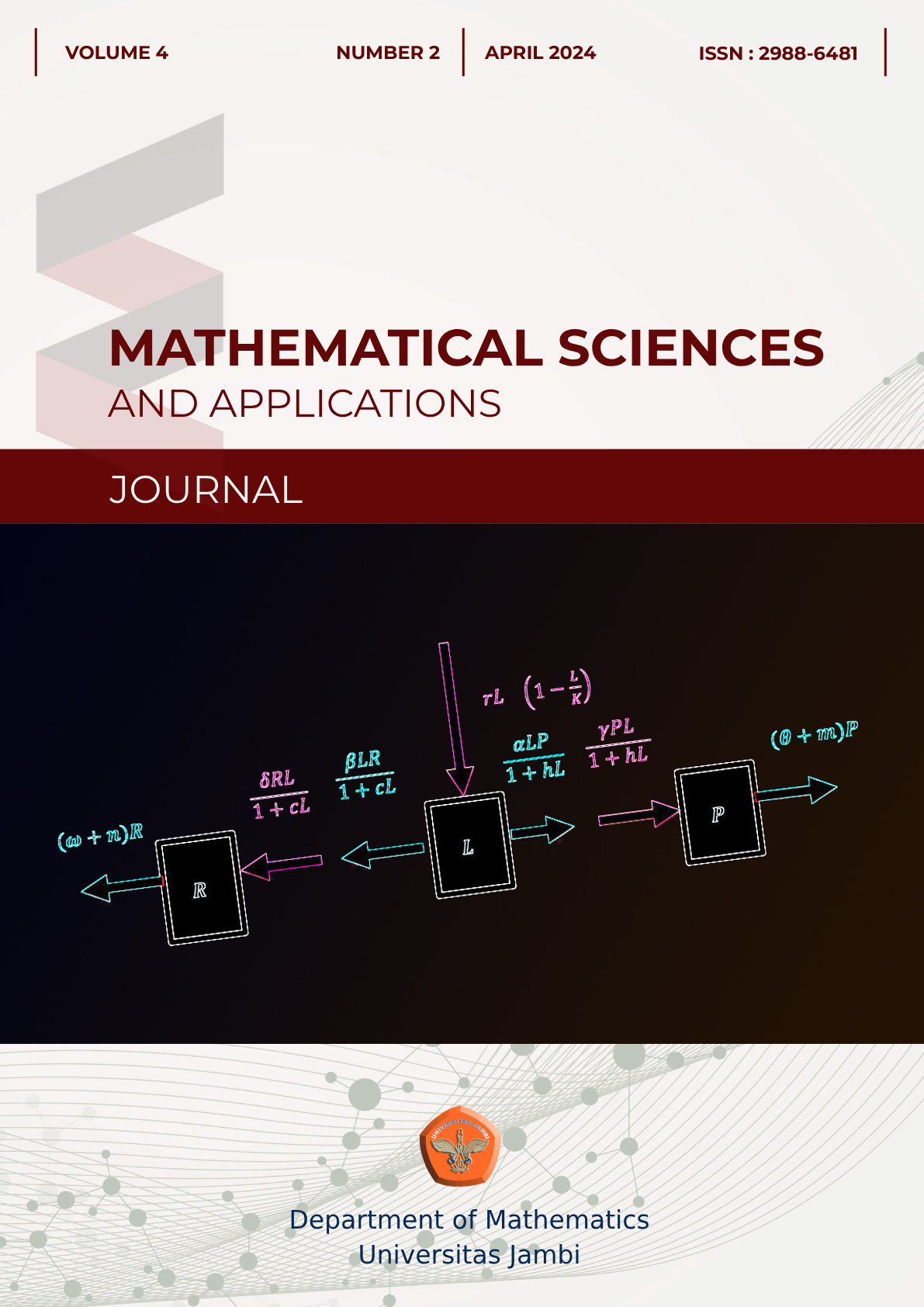Analisis Meta Hubungan antara Obesitas dan Risiko Diabetes Mellitus dengan Data Binary dan Odd Ratio menggunakan Model Random Effect
DOI:
https://doi.org/10.22437/msa.v4i2.28287Keywords:
Effect size, Random effect, Obesity, Diabetes mellitusAbstract
Meta-analysis is a statistical technique used to combine the results of several primary studies that have been conducted previously, with the aim of obtaining stronger and more accurate conclusions than can be obtained from each primary study individually. In this case, meta-analysis is performed to evaluate the relationship between obesity and the risk of diabetes mellitus. The data used in this meta-analysis is binary data, which contains information about the presence or absence of diabetes mellitus in individuals who are obese. The odds ratio is used as a measure of effect, which is the ratio between the likelihood of diabetes mellitus in individuals who are obese compared to individuals who are not obese. The results of the meta-analysis show heterogeneity between the primary studies conducted. Therefore, random effects are used in the meta-analysis model. The results of the analysis show that there is a significant relationship between obesity and the risk of diabetes mellitus, with a high odds ratio value. The conclusion from this meta-analysis is that obesity significantly increases the risk of diabetes mellitus. This finding has important implications in efforts to prevent and treat diabetes mellitus, especially in individuals at high risk for obesity.
Downloads
References
Kemenkes, R. I. 2015. Rencana strategis kementerian kesehatan tahun 2015-2019. Jakarta: Kementerian Kesehatan RI.
Xu, H., Hutcheon, J. A., Liu, X., Stephansson, O., Cnattingius, S., Arkema, E. V., & Johansson, K. 2022. Risk of gestational diabetes mellitus in realtion to early pregnancy and gestational weight gain before diagnosis: A population-based cohort study. Acta obstetricia et gunocologica Scandinavica, 101(11), 1253-1261.
Orós, M., Siscart, J., Perejón, D., Serna, M. C., Godoy, P., & Salinas-Roca, B. 2023. Ethnic Disparities and Obesity Risk Factors in Pregnant Women: A Retrospective Observational Cohort Study. Nutrients, 15(4), 926.
Misnadiarly. 2006. Diabetes mellitus gangren, ulcer, infeksi : mengenali gejala, menanggulangi, mencegah komplikasi / Misnadiarly. Jakarta: Pustaka Populer Obor.
Kleinwechter, H. J., Weber, K. S., Mingers, N., Ramsauer, B., Schaefer-Graf, U. M., Groten, T., ... & Pecks, U. 2022. Gestational diabetes mellitus and COVID-19: results from the COVID-19–Related Obstetric and Neonatal Outcome Study (CRONOS). American Journal of Obstetrics and Gynecology, 227(4), 631-e1.
Irbah, H., & Zara, N. 2022. Analisis Faktor Risiko Pasien Diabetes Mellitus di Puskesmas Dewantara Kecamatan Dewantara Kabupaten Aceh Utara. GALENICAL: Jurnal Kedokteran dan Kesehatan Mahasiswa Malikussaleh, 1(1), 1-12.
Kemenkes, R.I. 2018. Laporan Hasil Riset Kesehatan Dasar (Riskesdas) Indonesia tahun 2018, Riset Kesehatan Dasar, 182-183.
Goyal, A., Gupta, Y., Kalaivani, M., Praveen, P. A., Ambekar, S., & Tandon, N. 2022. SARS-CoV-2 Seroprevalence in individuals with type 1 and type 2 diabetes compared with controls. Endocrine Practice, 28(2), 191-198.
Agudelo-Botero, M., Giraldo-Rodríguez, L., & Dávila-Cervantes, C. A. 2022. Type 2 diabetes and depressive symptoms in the adult population in Mexico: a syndemic approach based on National Health and Nutrition Survey. BMC Public Health, 22(1), 2049.
Ge, Q., Li, M., Xu, Z., Qi, Z., Zheng, H., Cao, Y., ... & Zhuang, X. 2022. Comparison of different obesity indices associated with type 2 diabetes mellitus among different sex and age groups in Nantong, China: a cross-section study. BMC geriatrics, 22, 1-9.
Cai, Q., Shi, S., Shen, H., Ye, B., & Cheng, W. 2023. Combined general and central obesity indices to predict gestational diabetes. The Journal of Maternal-Fetal & Neonatal Medicine, 36(1), 2183765.








